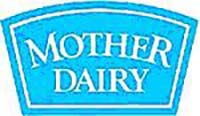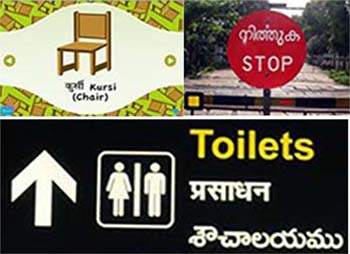1 What is environmental print?
Start by looking at the term ‘environmental print’, its meaning and how it can support students’ learning.
Environmental print is often the first writing that students learn to read with enjoyment and enthusiasm. For instance, many students will know that the words in Figure 1, on a blue background, and this shape, mean a nice treat of ice cream. Can you think of other signs like this?
Figure 1 Mother Dairy logo
Most students start school with some knowledge about print and also some knowledge about English. In school they are exposed to new, different forms of writing: charts, lists, names, schedules, labels and all kinds of reading material.
At little or no cost, you can make a lively, visual classroom where students are exposed to a range of print. The walls and spaces of your classroom can be a creative communicational environment where you display and teach with a variety of school, community and home writing.
Activity 1: From signs and symbols to reading
Have you ever been in a foreign country, or to a different state in your own country, where you could not read the local language? How did you figure out where to go, what to do or what the shop signs and street posters meant? Did you sometimes get it wrong? Were you pleased when you worked it out? Did you use your home language knowledge to work out the new language?
Your students who cannot yet read are in this ‘foreign country’. They see letters and words written on different things in different places: boxes in the market, labels on clothing, billboards and traffic signs on the road, books or pamphlets in the home, announcements in the temple or the mosque, and text on mobile phones. They know that these marks and symbols carry information. They begin to 'read' the information using clues that surround the words: pictures, symbols, colours, shapes, where the writing is located and what people do with the writing.
Look at Figure 2. Think about how the words and images work together, and the colours you also might see with the words and shapes. If you could not read any written language, how would you know what these signs say?
Figure 2 Three signs.
If you did not know any Hindi or any English, you could still work out the meaning of the signs by using your life experience and your knowledge of the world. Students are building their knowledge about language and the world.
Many urban students can ‘read’ the symbols that identify corporations and brands. In the same way, rural students know the symbols for ‘railway crossing’ or ‘bus stop’. The environmental print that students can ‘read’ is influenced by their life experiences so far, where they live, and what happens around them at home and in the community.
What you can learn in this unit


